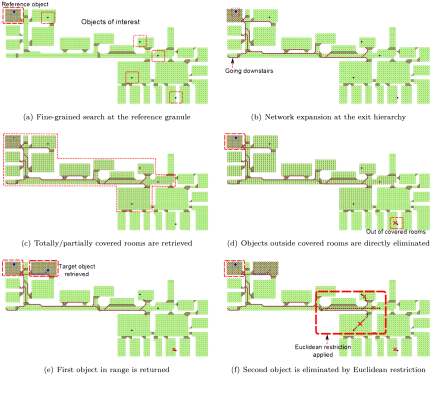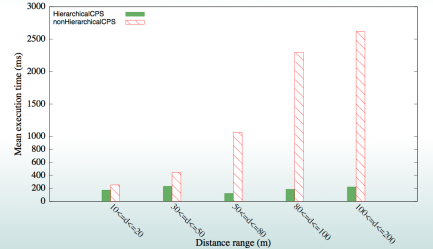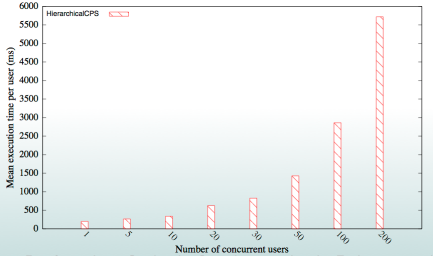Current Research Projects
Dec 2015 – Dec 2017 : Leading a research project in TIC for the development of Smart and Deep Maps, by positing that maps in future will intelligently self-update themselves based on information dynamically extracted from social media streams, crowd-sourced data, and on-line news sources. These maps will infer information about new places of interest, events, and statistical analytics from a diversity of sources in real-time. The challenges include developing a scalable and efficient system to deal with a variety of unstructured data streams, applying deep learning techniques to extract relevant information from these streams, and inferring the spatio-temporal scope of each new piece of information. This provides a unique and dynamic map browsing experience at different abstraction levels.
April 2015 – Dec 2016 : Leading a research and development project on eHealth in TIC, Saudi Arabia towards the development of a Context-Aware Health Monitoring solution. Mainly, this project introduces a patient-adaptive environment for the gamification of hand therapies in order to facilitate and encourage the rehabilitation process. The real-time system handles streams of data generated by the 3D monitoring device (Leap Motion) and the patient performance within the game, in order to produce actionable insights and decisions regarding their quality of improvements.
Jan 2016 – Dec 2016 : Leading a research and development project in TIC on Location Tracking and Semantic Annotations of Moving Object Trajectories in Indoor Environments. The system model is based on an indoor positioning technology that consists of a network of Bluetooth Low-Energy (BLE) tags and multiple implemented protocols to enable indoor localization, as well as passive and active crowd tracking. Different data mining and semantic annotation methods are applied to discover users’ trajectories from untrustworthy sensor data.
Sept 2016 – Sept 2017 : Co-leading a research and development project in TIC on Vision-Enhanced Location Tracking in Indoor Environments. The system combines an indoor positioning technology that consists of a network of Bluetooth Low-Energy (BLE) tags and the different surveillance cameras existing indoors, so that a more accurate and video-based location tracking can be provided. Such a system can be perfectly applied to tracking children in malls or any other indoor space.
2014 – 2017 : Co-leading a research project in Kuwait for three years on Context-aware navigation services in indoor/outdoor environments (3 Research Assistants are involved in this project). Research topics include : Database Management, Query Processing, Geographic Information Systems.
Research Advising
Co-advising Faizan Ur Rehman (started end 2014) : a PhD. student in Computer Science at Grenoble University, France. Research topic : Towards The Next Generation of Maps : From Live Streams to Live Events.
Co-advising Ahmad Muaz Qamar (started end 2014) : a PhD. student in Computer Science at Universiti Sains Malaysia. Research topic : A multimedia e-health framework towards an interactive and non-invasive therapy monitoring environment.
Supervised four computer engineers on the different ongoing projects :
– Bilal Sadeq (Dec 2015 – August 2016) : Project title : A self Sustainable Crowdsourced Learning System for Dynamic Ride Sharing.
– Mashaal Musleh (February–August 2016) : Project title : Efficient Location Tracking Towards Pattern Analysis in Indoor Environments.
– Syed Hussain (January – August 2016) : Project title : Gamifying Hand Physical Therapy with Intelligent 3D Navigation.
– Zaid Tariq (March – May 2016) : Project title : Efficient Power Consumption Towards Passibe Indoor Tracking.
Ph.D. Research:
My PhD research wass oriented towards studying location- and context-aware services and queries in indoor environments, with a special focus on navigation-related queries (i.e., mainly path search and range queries). A unique combination of challenges arises, as the proposal must be able to represent different kinds of location-dependent queries in a flexible manner, and to take into account additional context information, time-dependency, and the hierarchical layout of the indoor environment. The main objective of this work is to investigate: “Data and knowledge representation of indoor mobile environments incorporated with user-centred context-awareness, and to discuss data management issues in indoor context-aware navigation systems. Within this context, the underlying principles to represent a context-aware indoor data model are presented, as well as methods and algorithms for the continuous location-dependent query processing in indoor environments are introduced.”

To achieve our goals we propose the following methodology that consists of: 1. Modelling and designing a hierarchically organized context-dependent indoor data model that can be viewed as a tree structure in which location information is represented at different levels of abstraction. This hierarchical design alleviates performance and scalability issues in location-dependent query processing. In addition, time-dependent functions that compute the network distance and the travel time are introduced. Furthermore, a classification of user profiles is presented in order to perform an offline filtering of the multi-level data model, thus reducing the amount of data that need to be processed in real-time.



2. Designing a generic architecture used for the continuous processing of location-dependent queries in indoor environments. Navigation-related queries are processed in accordance with this architecture, and are executed continuously while the request is not explicitly cancelled by the user. Moreover, a query grammar is also presented to express location-dependent queries. This grammar supports navigation queries and incorporates some other preferences and semantics in the query model. It also supports the hierarchical data model by using the concept of locations granules to represent the different levels of abstraction.
3. Developing algorithms for the continuous processing of location-dependent queries. Particularly, algorithms for hierarchical path searches and range queries applied to both static and moving objects are introduced. Those algorithms take advantage of the hierarchical data model of the indoor environment, and employ an incremental approach in order to efficiently execute continuous location-dependent queries, thus avoiding solving each search problem independently from scratch.

4. Designing and implementing a database extension based on the open source DBMS PostgreSQL for handling continuous path searches and range queries on top of the hierarchical network- based indoor data model. The main parts of the prototype developed are: (i) the hierarchical network-based data model of the indoor environments; (ii) the operators and location-dependent constraints introduced in the query grammar; and (iii) the algorithms to process continuous location-dependent queries over moving objects.




